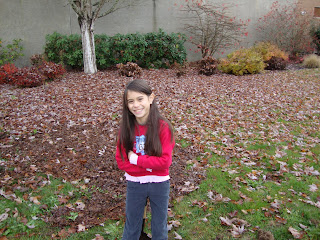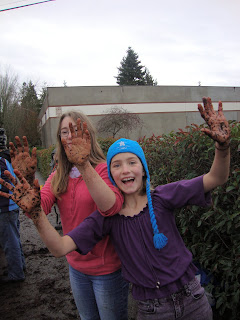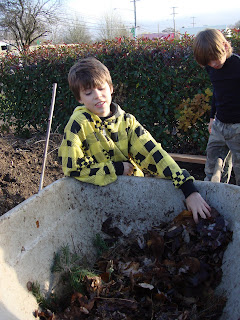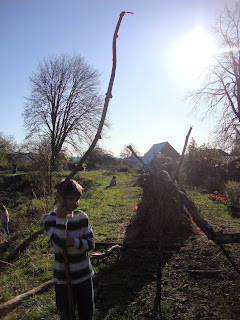The Great Level 2 Leaf Dump!
0 Comments »
At Outdoor School, Level Two students learned all about the layers of soil, and how forest duff decomposes to make the rich topsoil in which plants grow. They put their knowledge into practice several weeks ago by mulching the lot that will soon be the Community School's Learning Garden! Equipped with shovels, wheelbarrows, and other garden tools, the Kestrels, Merlins, and Falcons had to practice teamwork and communication in order to move and spread the massive leaf piles through the garden.
As they dug through the piles, some students made an exciting discovery: the center of the pile radiated warmth, steaming into the cold outside air! The presence of so many microorganisms and other decomposers in the pile, hungrily breaking down the organic material, can actually generate heat. It is this rich, decomposing matter that will ammend the soil, improving its quality for planting in the Springtime. Great work level two students!
If you would like to learn more about the development of our educational garden, please contact me at e.morgan@fgcschool.org. Meanwhile, enjoy the pictures below. Thanks!

As they dug through the piles, some students made an exciting discovery: the center of the pile radiated warmth, steaming into the cold outside air! The presence of so many microorganisms and other decomposers in the pile, hungrily breaking down the organic material, can actually generate heat. It is this rich, decomposing matter that will ammend the soil, improving its quality for planting in the Springtime. Great work level two students!
If you would like to learn more about the development of our educational garden, please contact me at e.morgan@fgcschool.org. Meanwhile, enjoy the pictures below. Thanks!






























